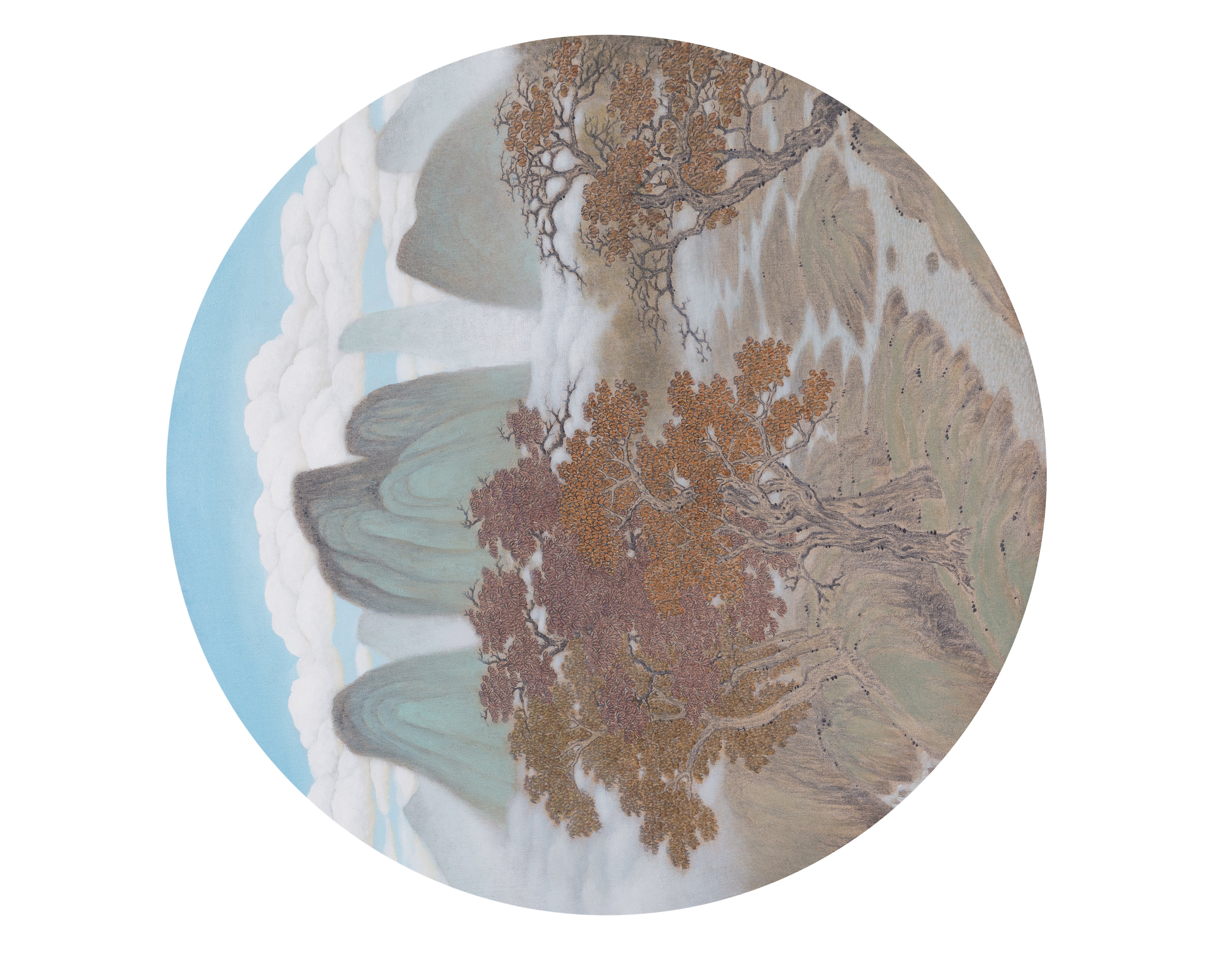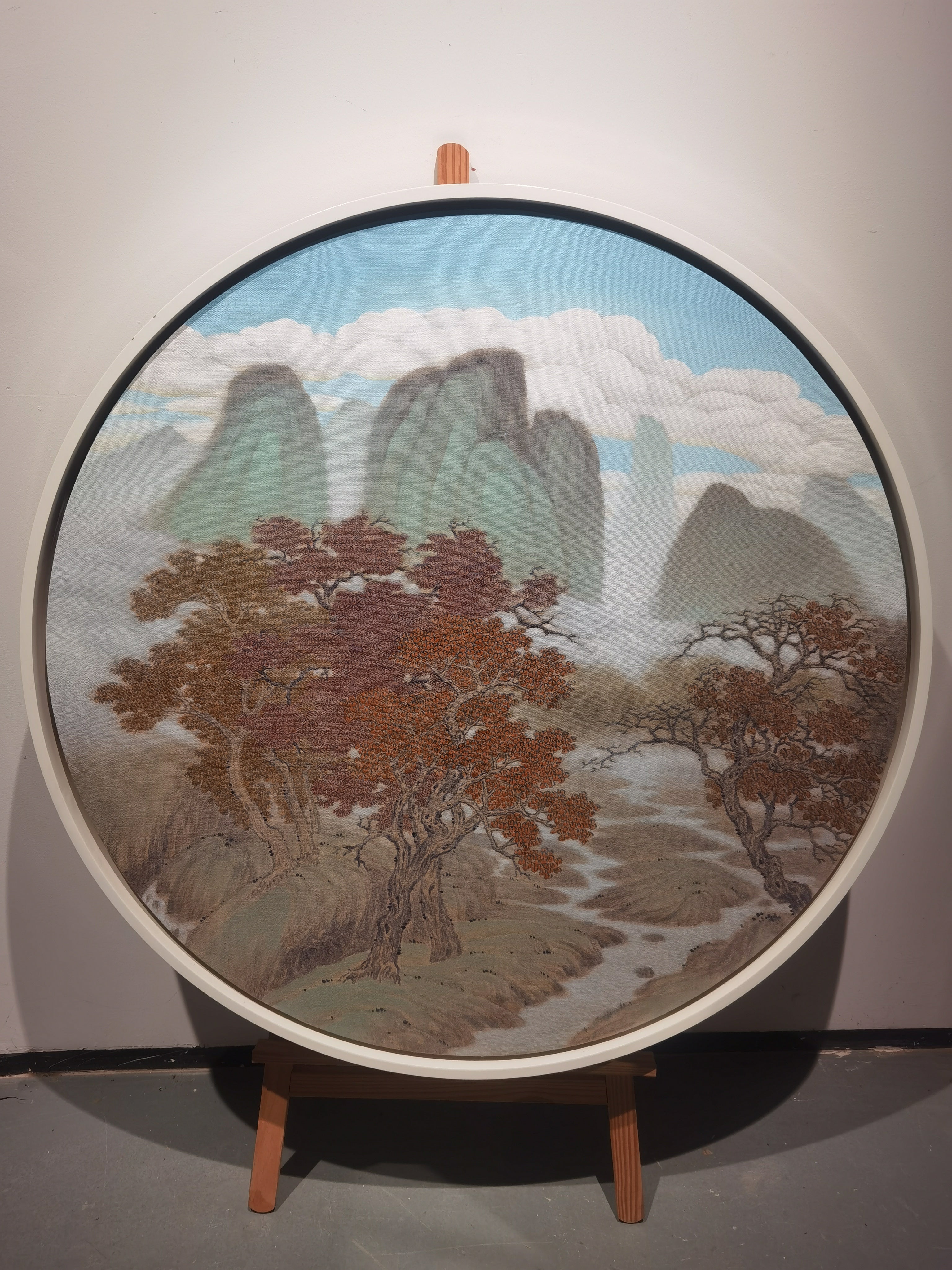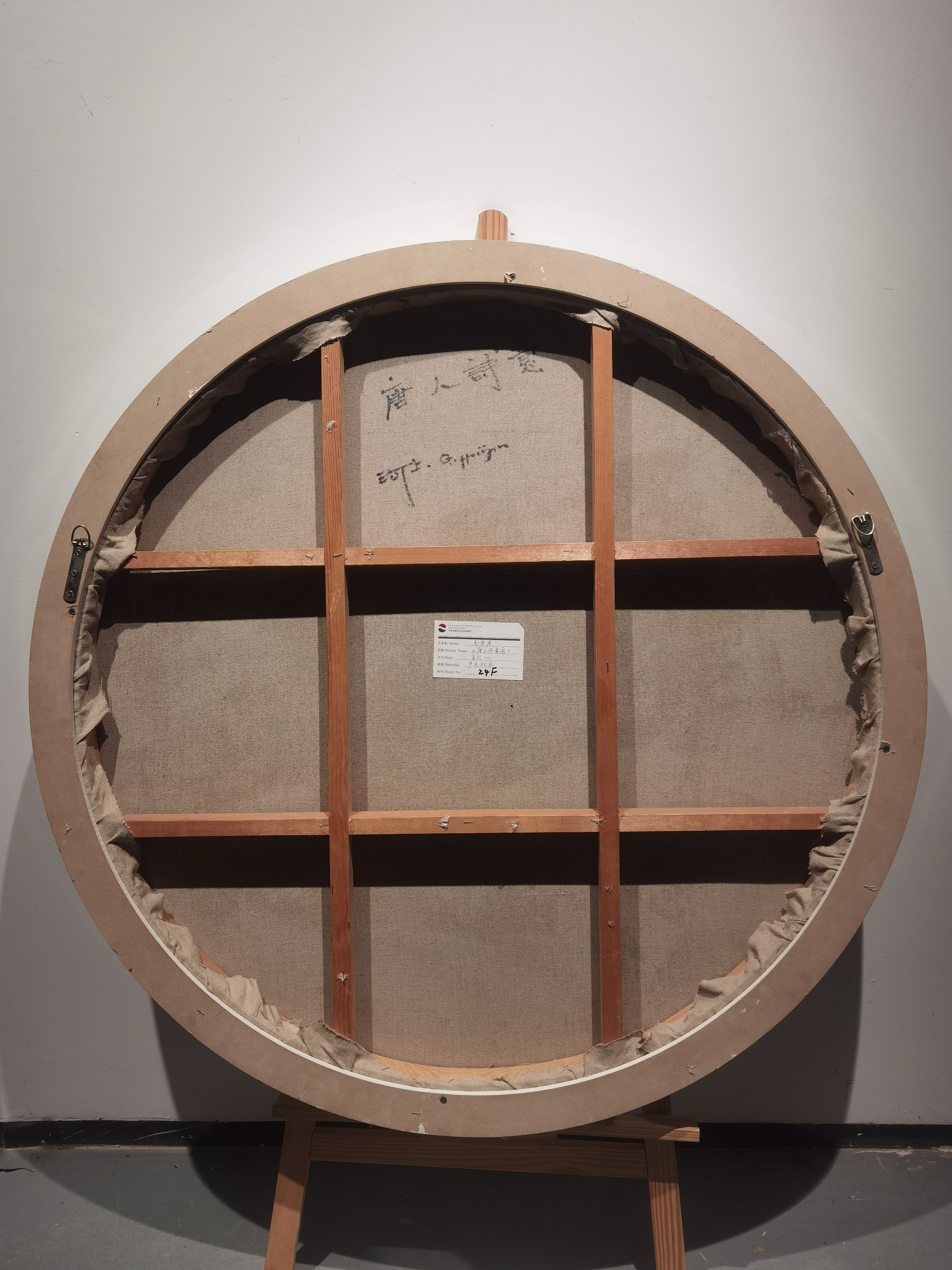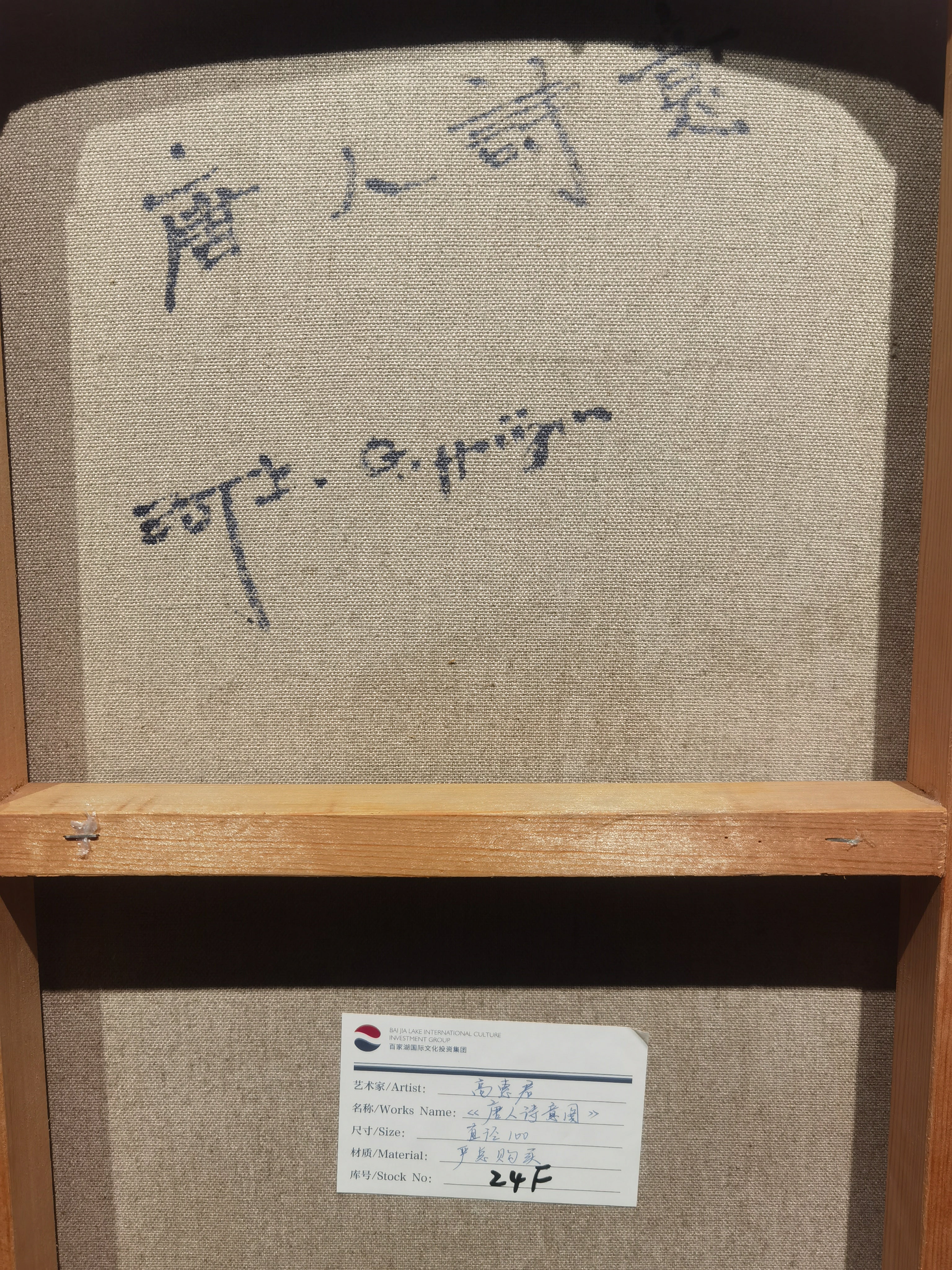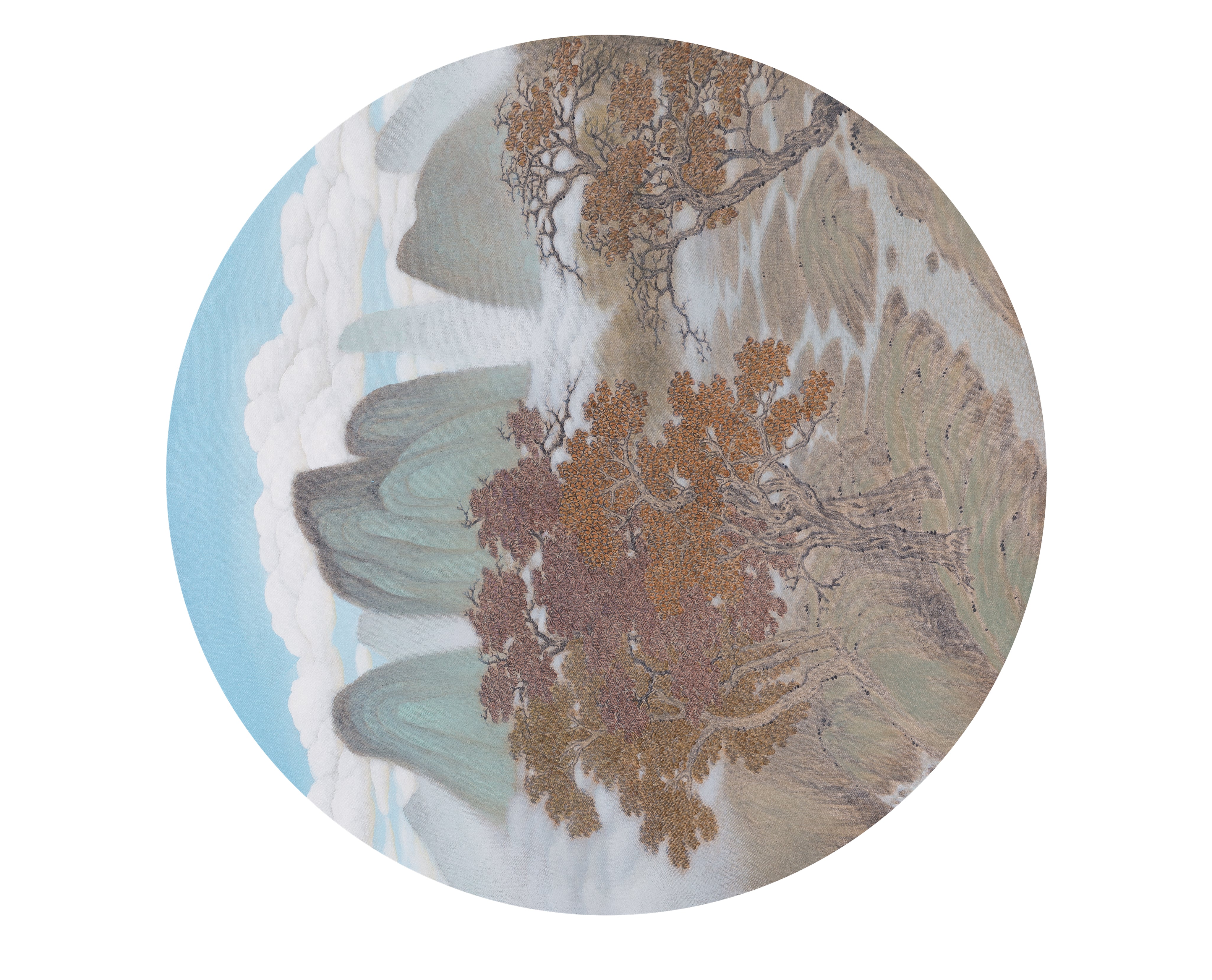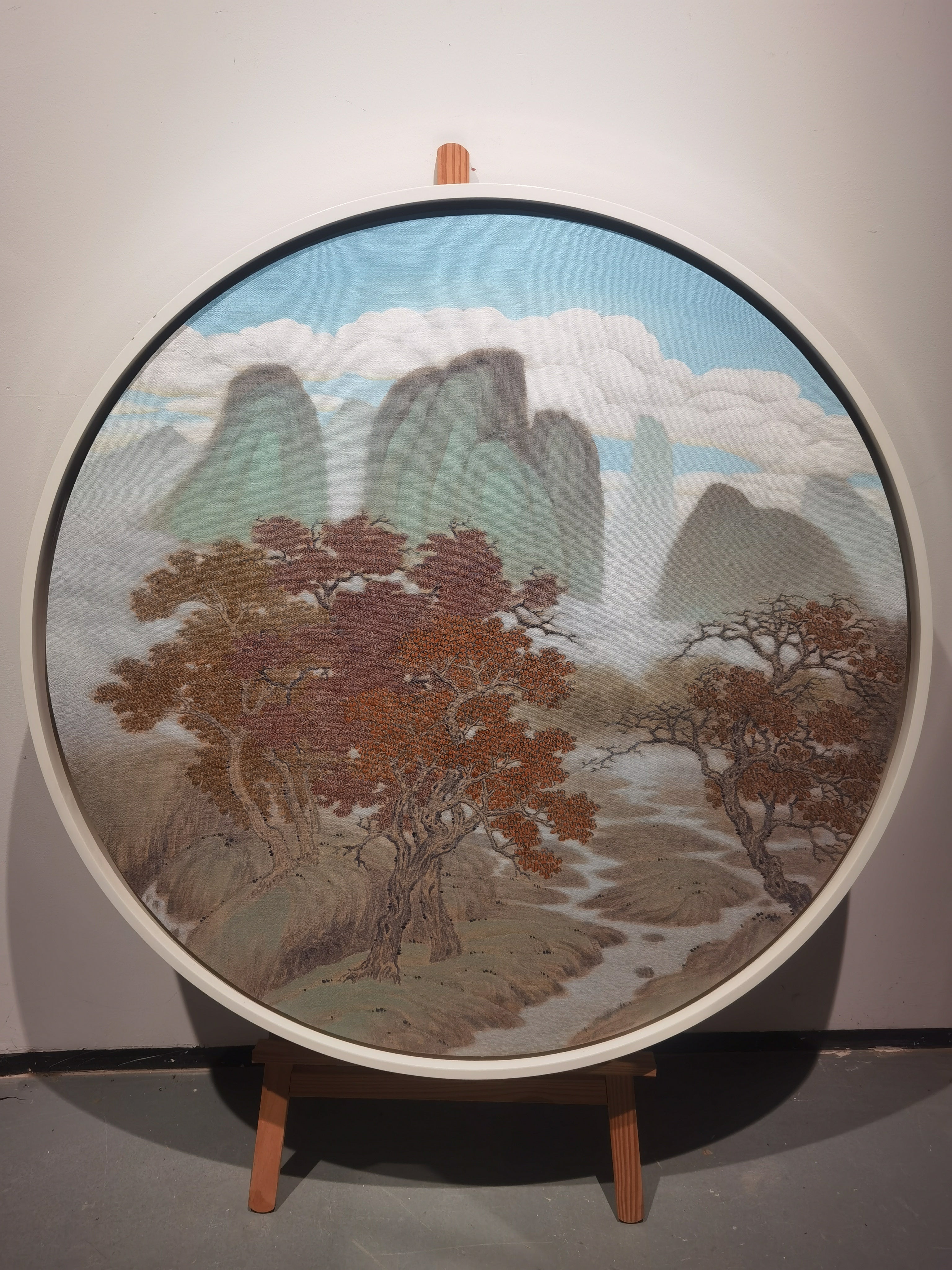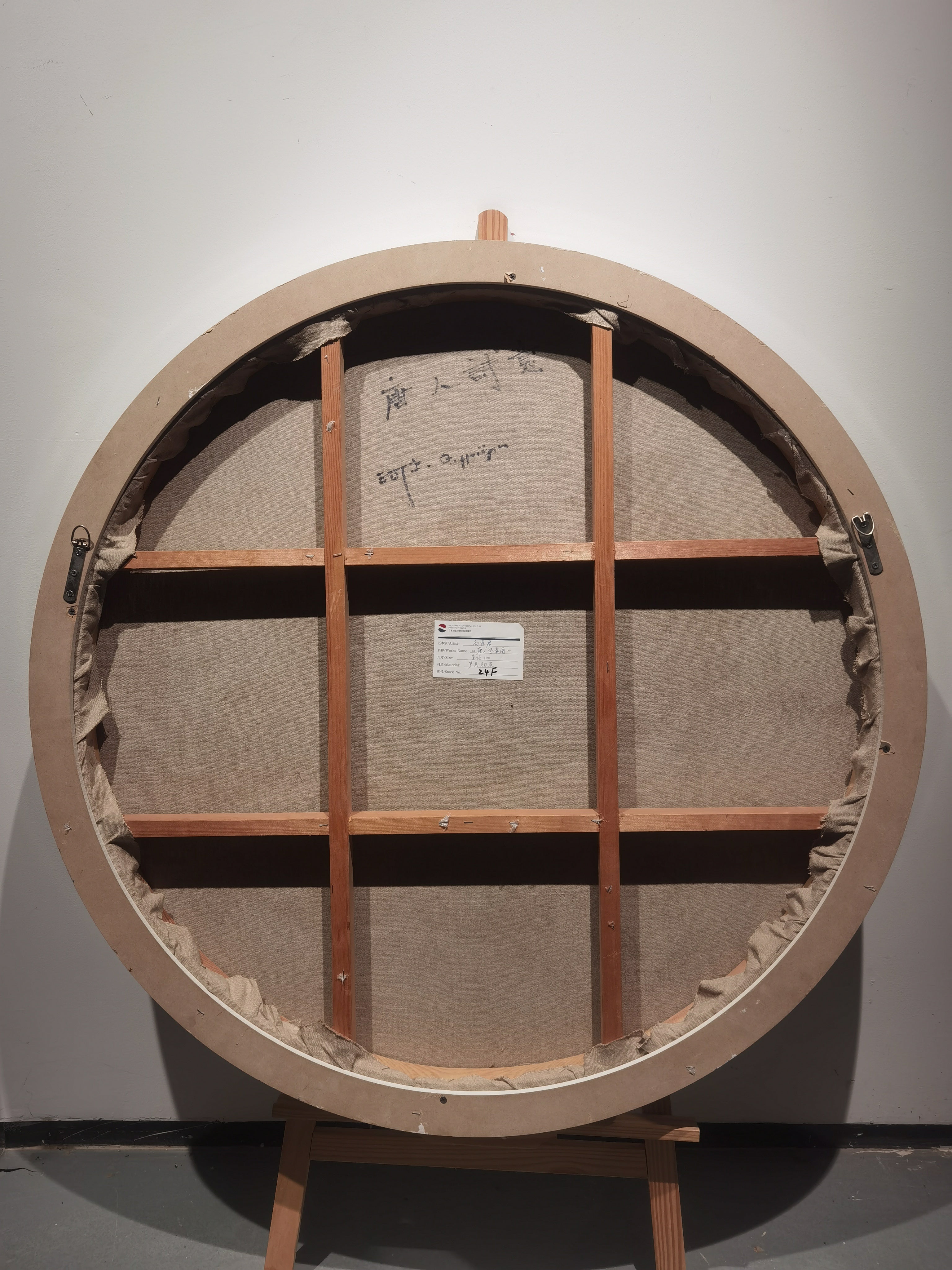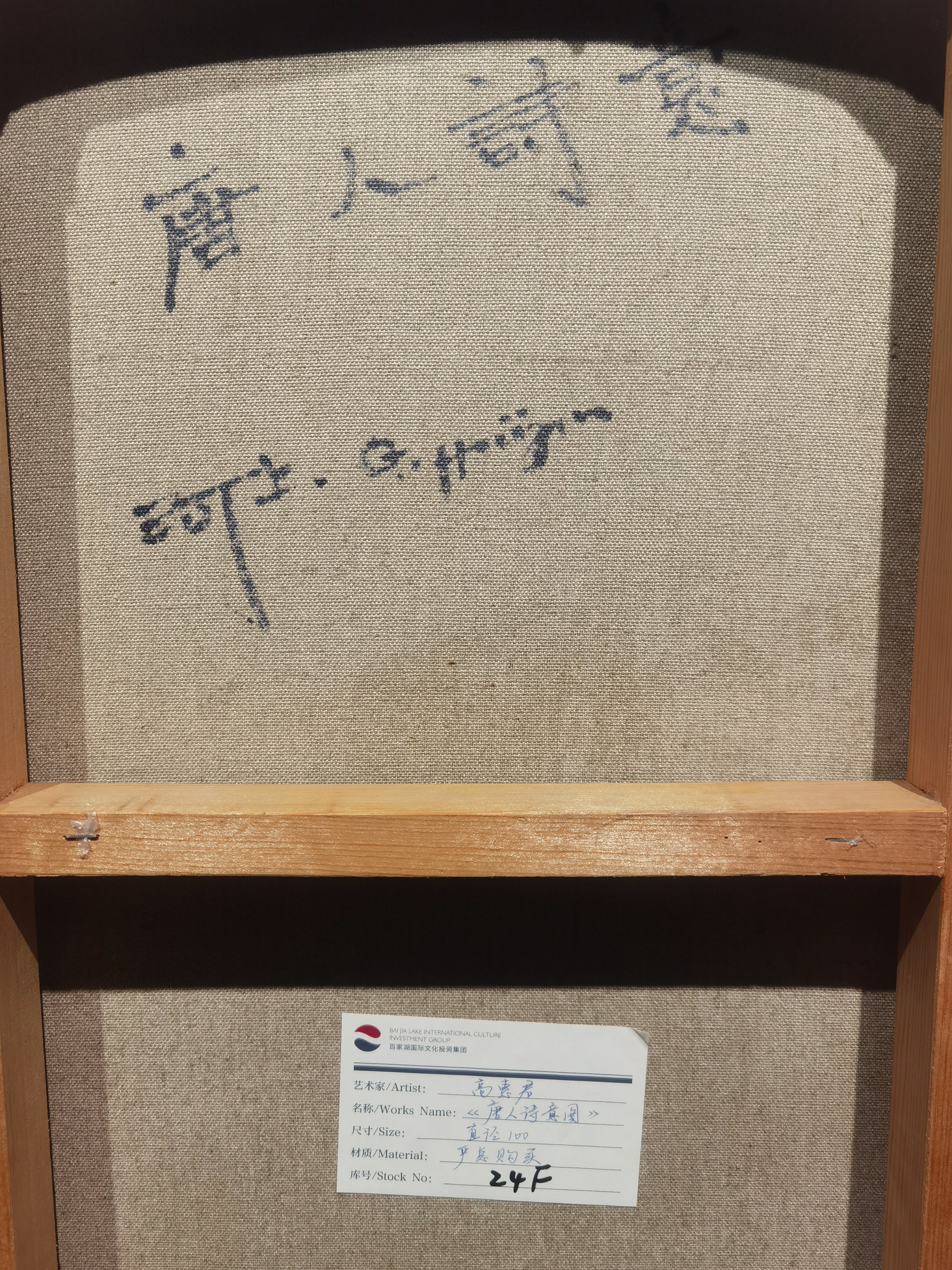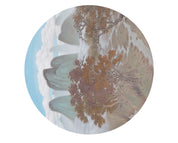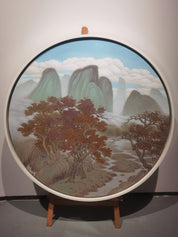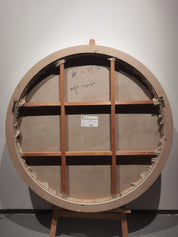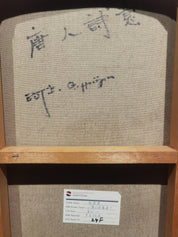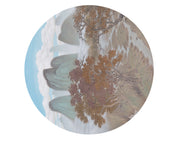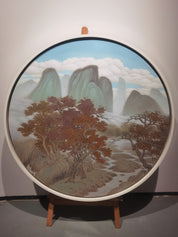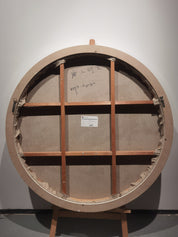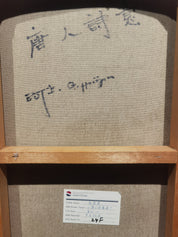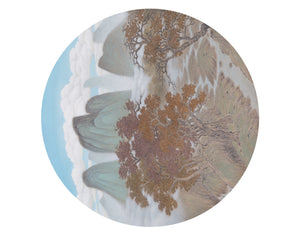Tang Poetic Picture
Huijun Gao
Artwork Details
Artwork Description
Title: Tang Poetic Picture
Artist: Huijun Gao
Date: n.d.
Medium: Acrylic on canvas
Dimensions: Diameter 100 cm (39.4 in)
1. Artwork Identification
Tang Poetic Picture is a circular landscape painting by Huijun Gao, rendered in acrylic on canvas. The composition presents a lyrical vision of a mist-enshrouded valley, where golden-hued trees arch above a meandering stream, set against the backdrop of stylized mountains and billowing clouds. Its gentle palette and meticulous brushwork evoke a contemplative mood in keeping with the classical Chinese poetic tradition.
2. Artistic Style and Influences
The circular format of the painting (reminiscent of traditional yuanhua) reinforces its thematic ties to Tang poetry—where harmony between man and nature, time and memory, often unfolds within intimate, balanced compositions. Gao’s refined use of texture and acrylic medium recalls classical ink-and-color techniques while offering a modern softness in atmospheric layering. His portrayal of clouds, trees, and mountains echoes the metaphysical serenity of Tang dynasty painting aesthetics.
3. Historical Context
While undated, this work aligns with Gao’s ongoing practice of merging historical landscape styles with a contemporary voice. By referencing Tang poetry in the Title:, the painting not only reflects the artist’s aesthetic lineage but also honors a golden era of Chinese cultural flourishing. The tranquil scene becomes a metaphorical space for introspection—much like the poetry it references.
4. Provenance
Provenance documentation can be provided upon contact.
5. Condition and Conservation
The artwork is in very good condition, with the surface clean and stable, and no signs of damage or conservation. Colors remain rich and harmonious across the composition.
6. Artistic Significance
Tang Poetic Picture embodies Huijun Gao’s sensitive engagement with Chinese intellectual heritage, particularly his capacity to distill literary elegance into visual form. Its circular format enhances the sense of completeness and philosophical unity, while the understated emotion in the scene speaks to the enduring power of quietude in traditional and contemporary Chinese art alike. It is a poetic meditation in visual language.

